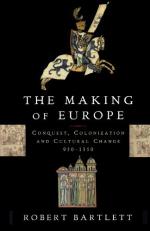|
This section contains 1,112 words (approx. 4 pages at 300 words per page) |

|
Choosing a Spouse. Men and women generally had more freedom to choose their marriage partners after 1750 than they had in pre-industrial Europe, though parents and kin still influenced their choices. Future couples usually met one another through common friends or family members. Traditionally, the man proposed, and, if the woman accepted, the agreement was followed by an exchange of gifts and a dinner involving both families. Arranged marriages still existed in the nineteenth century, especially among the aristocracy and upper bourgeoisie, but these engagements decreased in popularity as the importance of love and choice for lifelong domestic partners assumed greater importance. The movement of young people from the countryside to urban areas contributed to the decline of arranged marriages. Free from pressures of family, church, and community, youths living away from home could form and break relationships with relative ease...
|
This section contains 1,112 words (approx. 4 pages at 300 words per page) |

|




